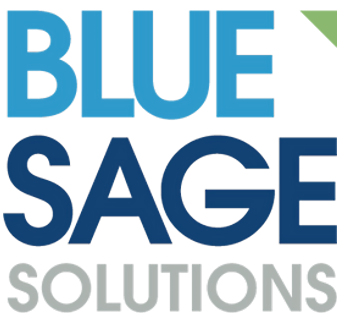Blog

Full Speed Ahead: A Mortgage Lender’s Survival Guide to Tech Implementation
Imagine this: You’ve just purchased a sleek, brand-new car. It’s packed with the latest features, promising a thrilling driving experience. But then you’re told you can’t take it for a spin for another year. Or you can drive it, but it’s missing a headlight, has a flat tire, and needs costly repairs right off the bat. The excitement quickly turns into frustration and disappointment.
This scenario, unfortunately, isn’t far from the reality that many mortgage lenders, banks, and financial firms face when implementing a new loan origination system (LOS). The allure of shiny new technology often overshadows the critical implementation phase, leading to costly delays, budget overruns, and user dissatisfaction.
The Grim Reality of Technology Implementation Failures – Eye-Opening Stats
The business landscape is littered with cautionary tales of botched implementations. It’s not just anecdotal evidence; the data paints a stark picture:
- Staggering Failure Rates: A 2017 study by McKinsey revealed that a mere 30% of digital transformation efforts succeed. Imagine, 7 out of 10 companies investing significant time and resources into new technology only to fall short of their goals.
- Time is Money: The Standish Group’s CHAOS Report consistently shows that over 50% of IT projects exceed their original time estimates. Every day of delay translates to lost productivity, missed opportunities, and mounting frustration.
- Budget Blowouts: The same CHAOS Report indicates that 43% of IT projects go over budget. These unexpected costs can strain resources and impact profitability.
- User Adoption Blues: Gartner’s research estimates that 70% of technology projects fail due to lack of user acceptance. Even the most advanced system is useless if your team doesn’t embrace it.

Why Tech Implementation Matters From Day One – The Strategic Imperative
Addressing implementation early in the decision-making process isn’t just a best practice; it’s a strategic imperative. Here’s why:
- Accelerated ROI: A well-executed implementation accelerates time-to-value. You’ll start reaping the benefits of your new LOS sooner, gaining a competitive edge and improving your bottom line. For example, an effective, innovative LOS can reduce loan processing times, leading to faster closings and increased customer satisfaction.
- Mitigating Change Resistance: Change is inherently challenging, but a proactive approach to implementation can minimize disruption and foster a culture of acceptance. Transparent communication, comprehensive training, and ongoing support are key to ensuring a smooth transition.
- Driving User Adoption: A positive implementation experience sets the stage for enthusiastic user adoption. When employees feel empowered and supported, they’re more likely to embrace the new system and utilize its full potential.

The Successful LOS Implementation Playbook – Expert Strategies
As a seasoned IT and mortgage industry veteran with over 15 years of experience and hundreds of implementations under my belt, I’ve seen firsthand the difference a well-structured approach can make. Here’s my playbook for ensuring a successful LOS implementation:
1. Start the Conversation Early – Vendor Due Diligence
Don’t wait until the contract is signed to start thinking about implementation. Engage with vendors and your internal team from the very beginning.
- Ask vendors pointed questions about their implementation philosophy, methodology, and support. Probe for specifics about their experience with similar organizations and any lessons learned.
- Request detailed case studies and references. Don’t hesitate to connect with other clients to get their firsthand perspectives on the vendor’s implementation process.
- Clearly articulate your specific needs and expectations. Understand and align internally on YOUR business needs through documenting your desired workflow. Ensure the vendor understands your unique business requirements, but also adopt a growth mindset of being open to new collaborative approaches with your vendors.
2. Assemble an Internal Tiger Team – The A-Team
A tiger team is not just any group; it’s a dedicated, cross-functional task force of your most capable individuals. This team should include representatives from IT, operations, lending, compliance, and any other relevant departments.
- The tiger team acts as a bridge between the vendor and your organization, ensuring seamless communication and collaboration.
They are empowered to make decisions, resolve issues, and keep the project on track. - Consider appointing a strong project manager to lead the tiger team and ensure clear accountability.
3. Identify and Empower Internal Champions – The Change Agents
In addition to the tiger team, identify individuals within each department who are enthusiastic about the new system and willing to champion its adoption.
- These champions can act as ‘super users,’ providing peer-to-peer support and training.
- They can also offer valuable feedback to the tiger team, ensuring the system meets the needs of their respective departments.
- Recognize and reward their efforts to reinforce their role and encourage others to embrace the change.
4. Set a Minimum Viable Product (MVP) Goal – Stay Focused
Define the essential features and functionalities required for the initial launch. It’s tempting to try to do everything at once, but resist the urge. Adopt a “strive for production over perfection” approach:
- Focus on getting the core system up and running first. You can always add additional features and enhancements later.
- Conduct regular meetings to assess progress and make data-driven decisions. Be prepared to say ‘no’ to features that aren’t critical to the MVP.
- Validate readiness through rigorous user testing and feedback. Involve end-users early and often to ensure the system meets their needs and expectations.
5. Expect Bumps in the Road – Agile Mindset
No implementation is completely without its challenges. Anticipate setbacks and maintain a flexible, agile mindset.
- Openly communicate potential challenges and set realistic expectations with stakeholders.
- Foster a collaborative environment where team members feel comfortable raising concerns and offering solutions.
- Celebrate successes along the way to maintain momentum and morale.
This playbook has proven effective for countless organizations, including First Community Mortgage, who implemented their LOS in just six months. While not all implementations will be that fast, following these steps will significantly increase your chances of success.
Remember, a successful implementation is not just about the technology; it’s about the people and processes that support it. By taking a proactive, strategic approach to implementation, you can ensure your new LOS delivers on its promises, empowers your team, and drives your business forward – so you can enjoy the ride.
Tina Kosur is Head of PMOat Blue Sage Solutions

Tina Kosur

